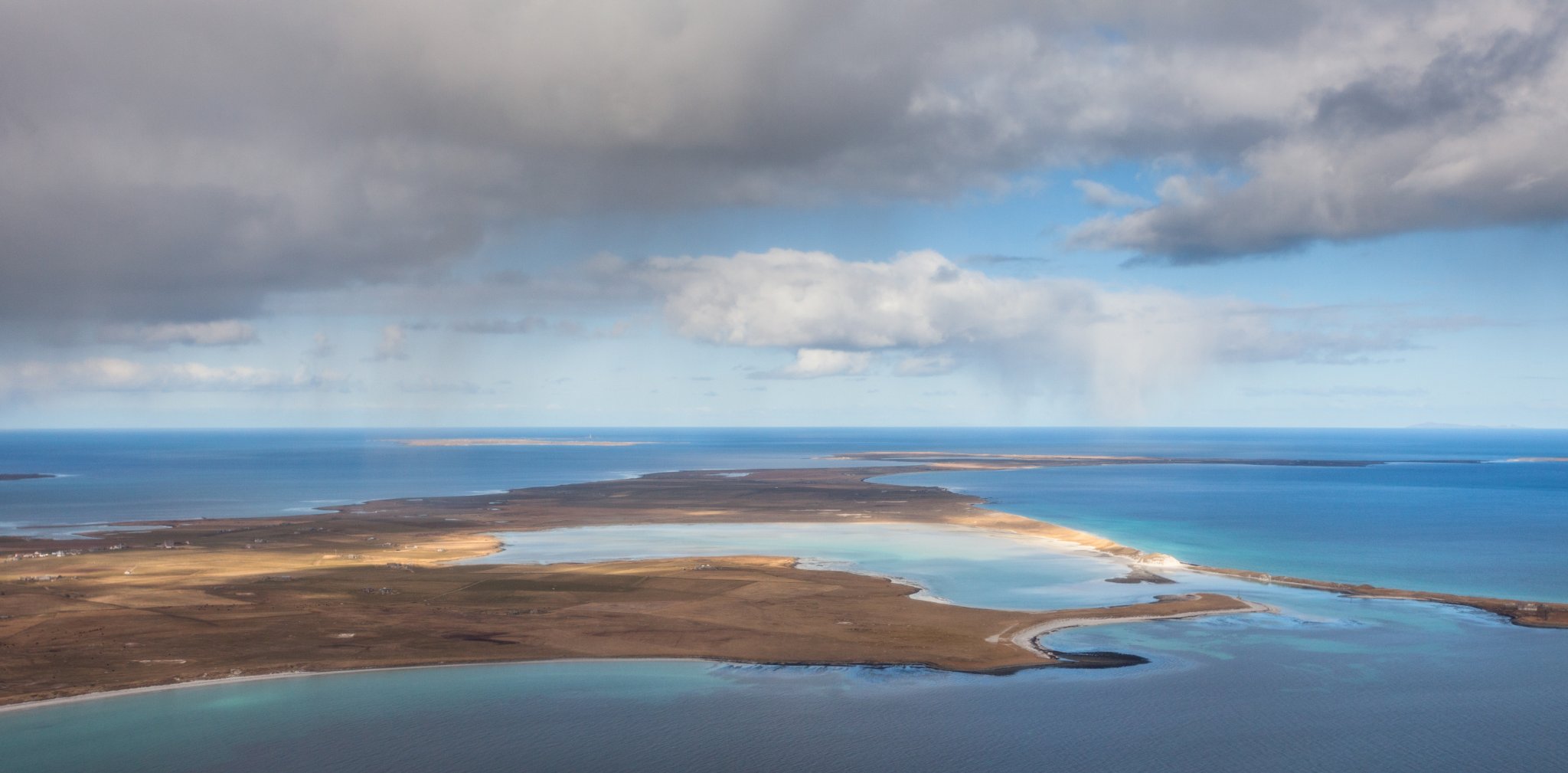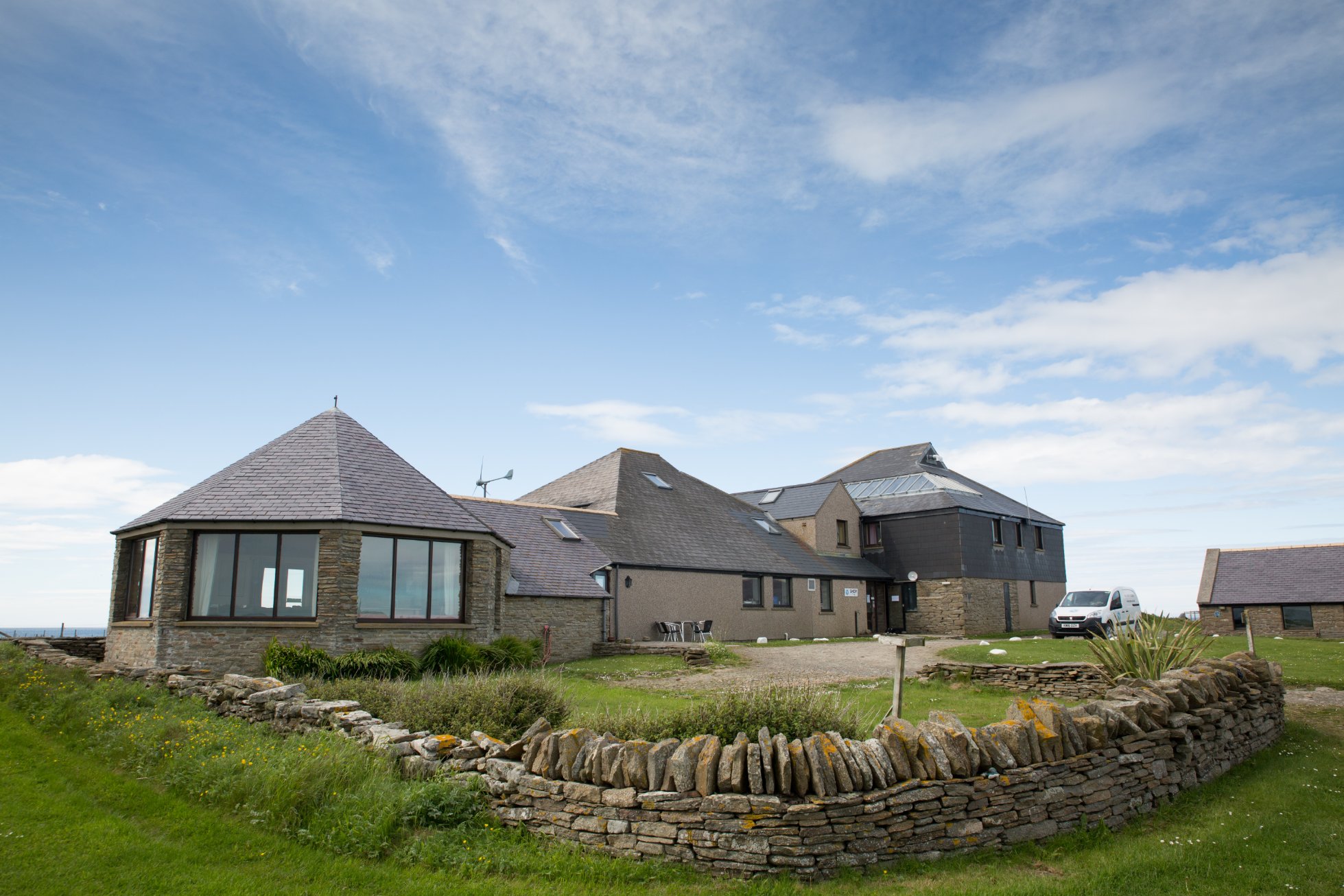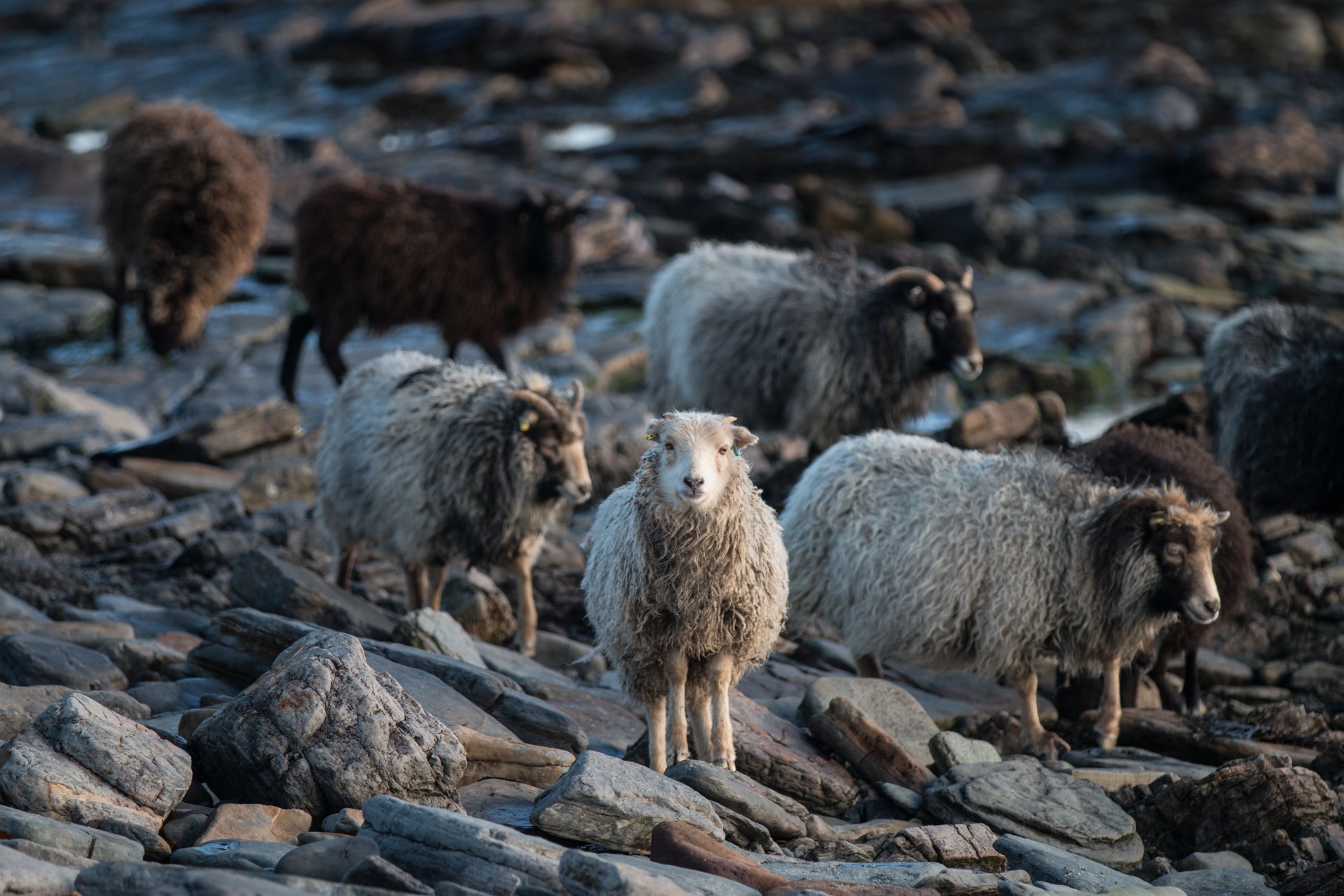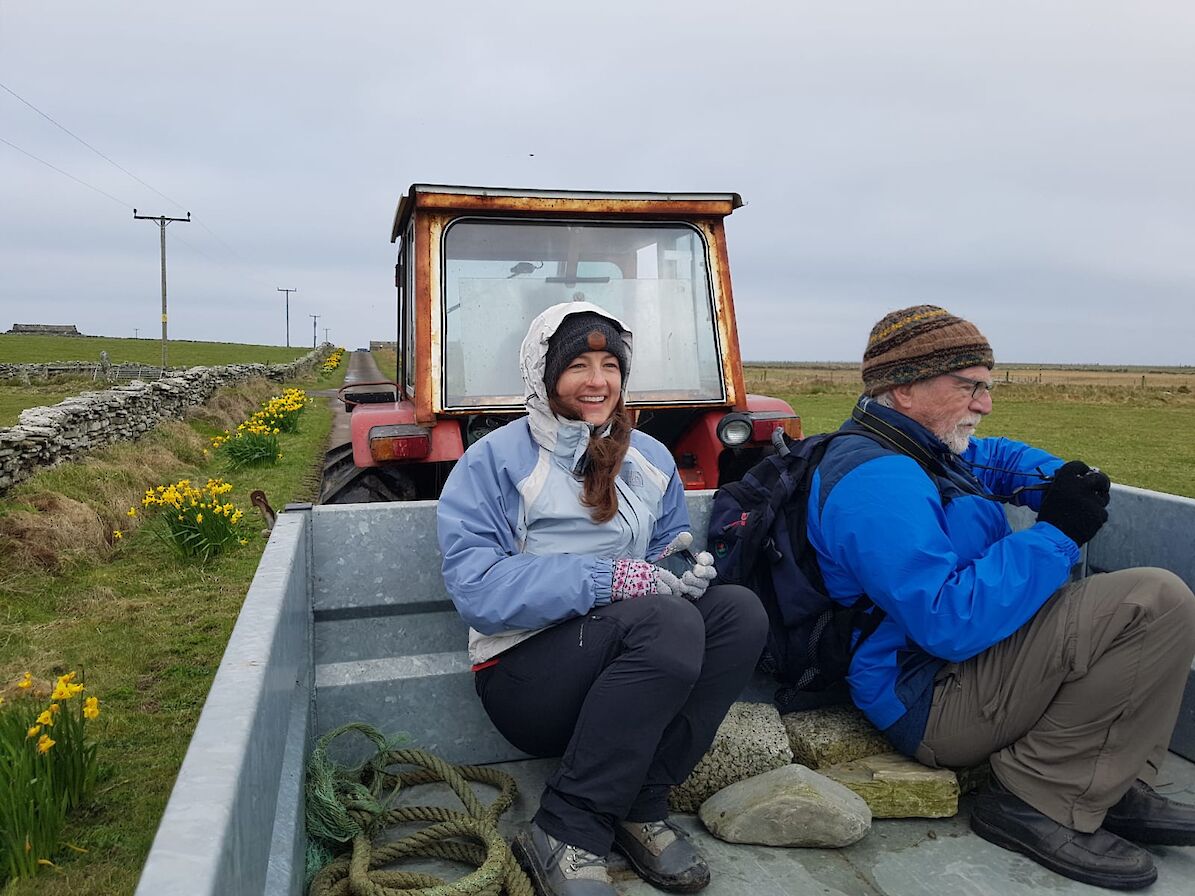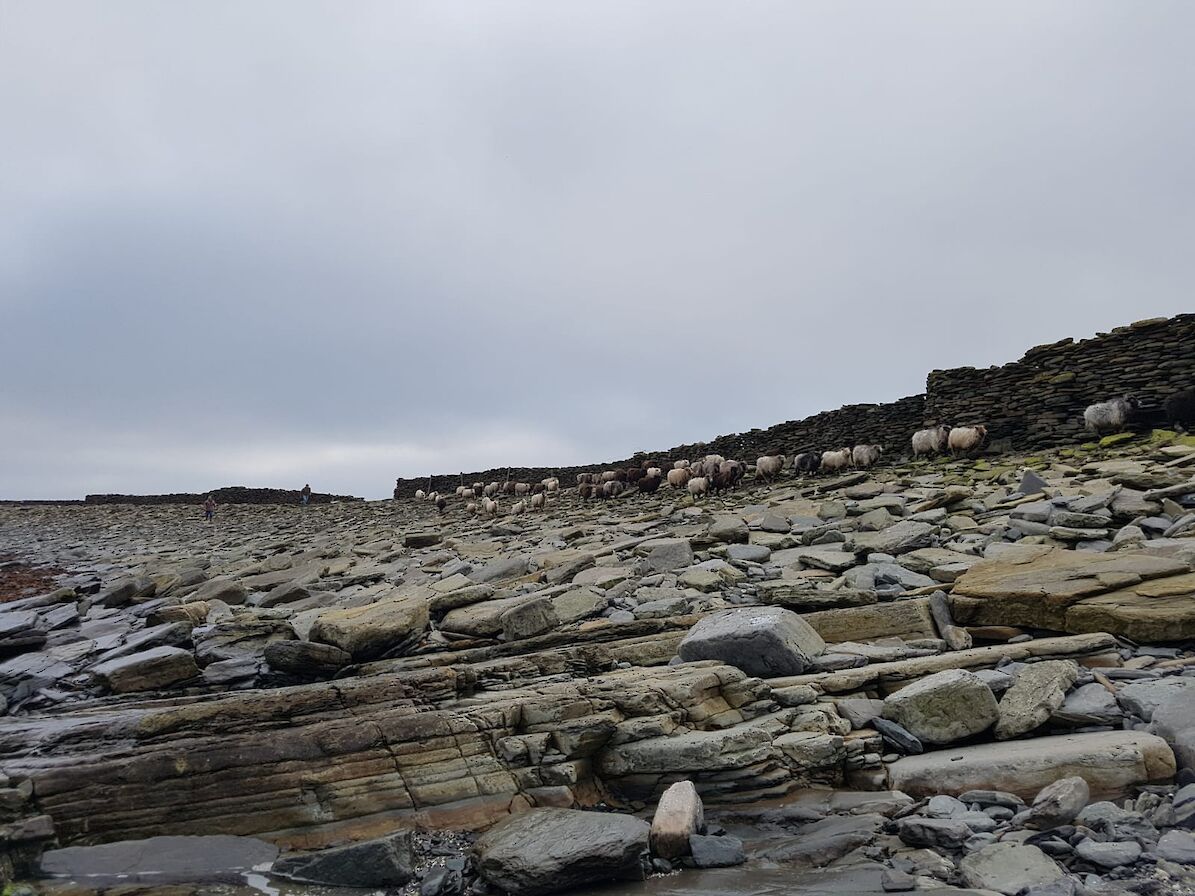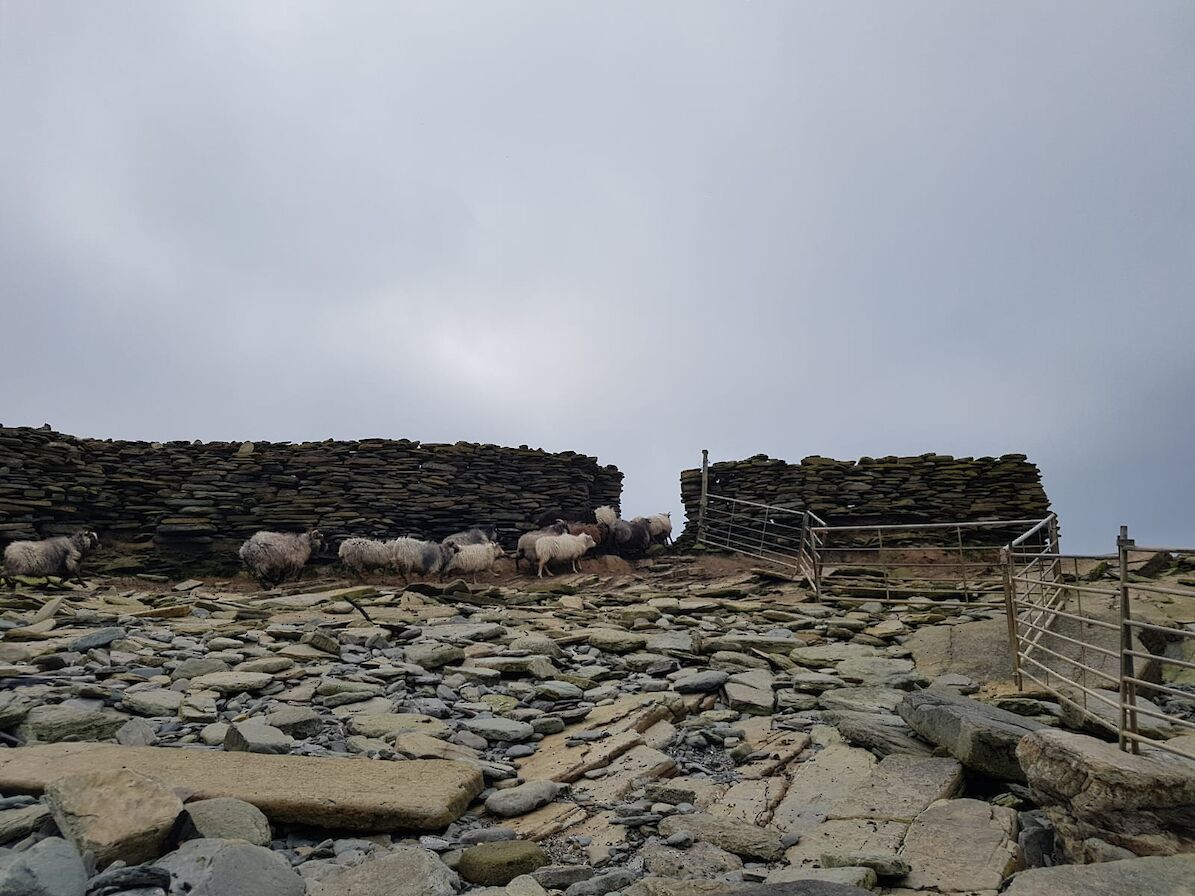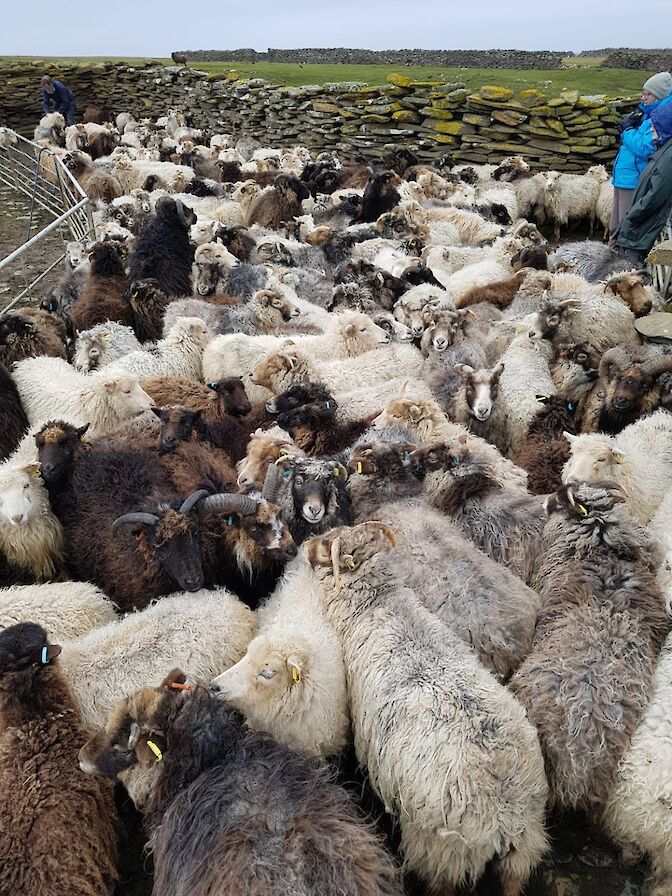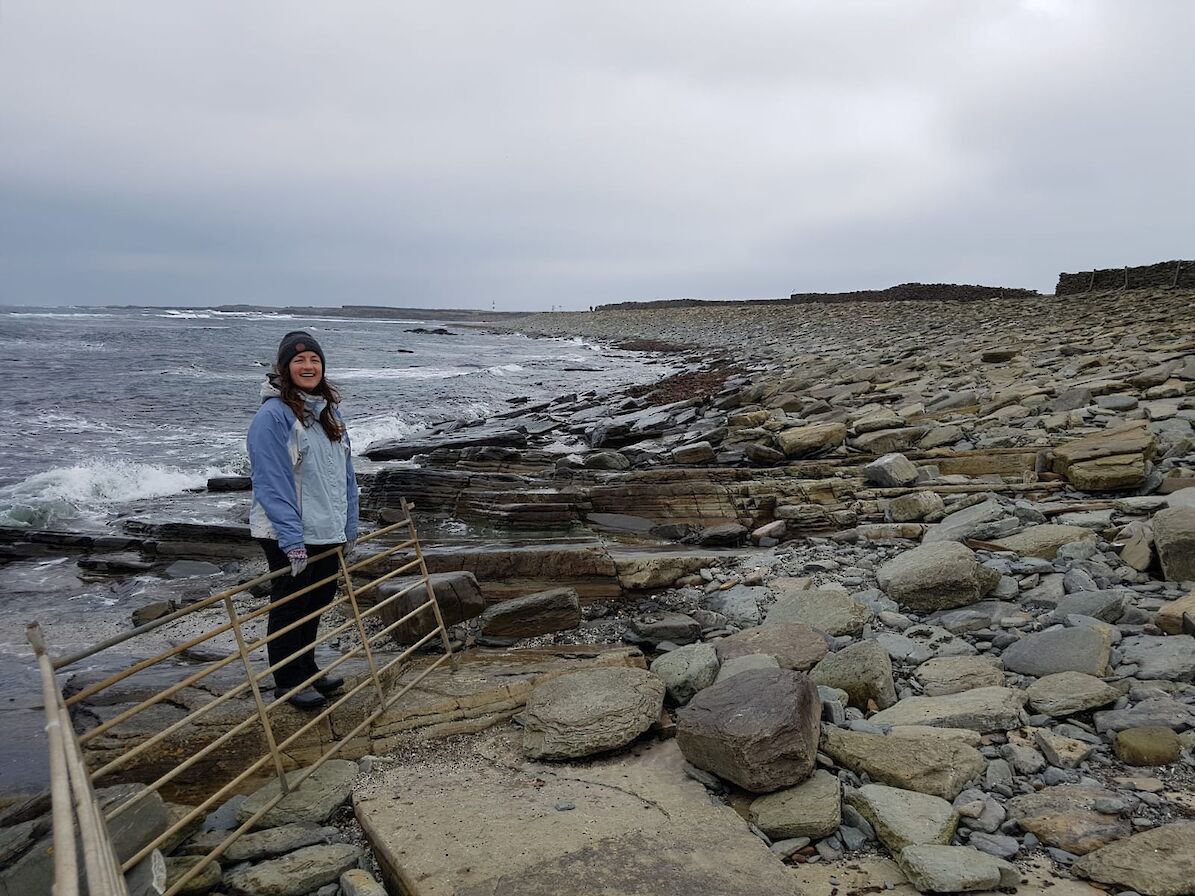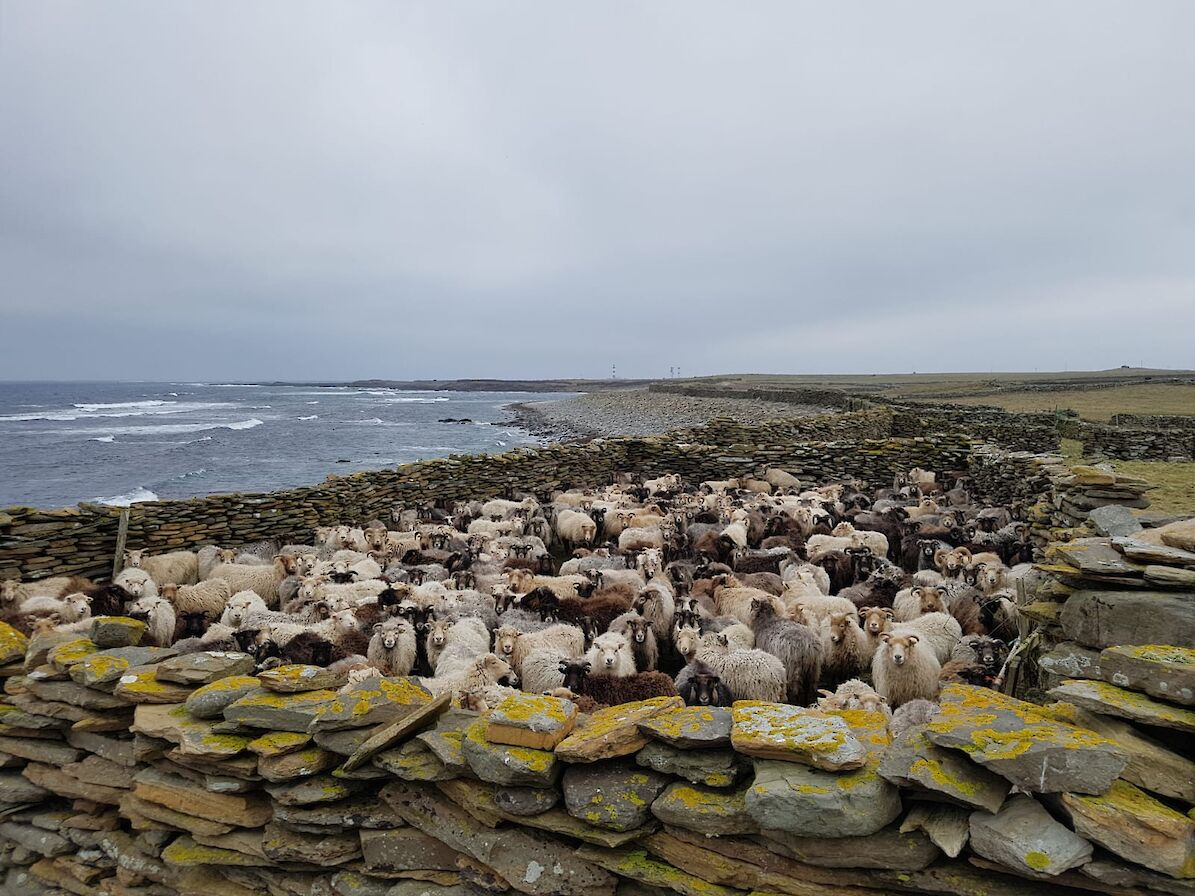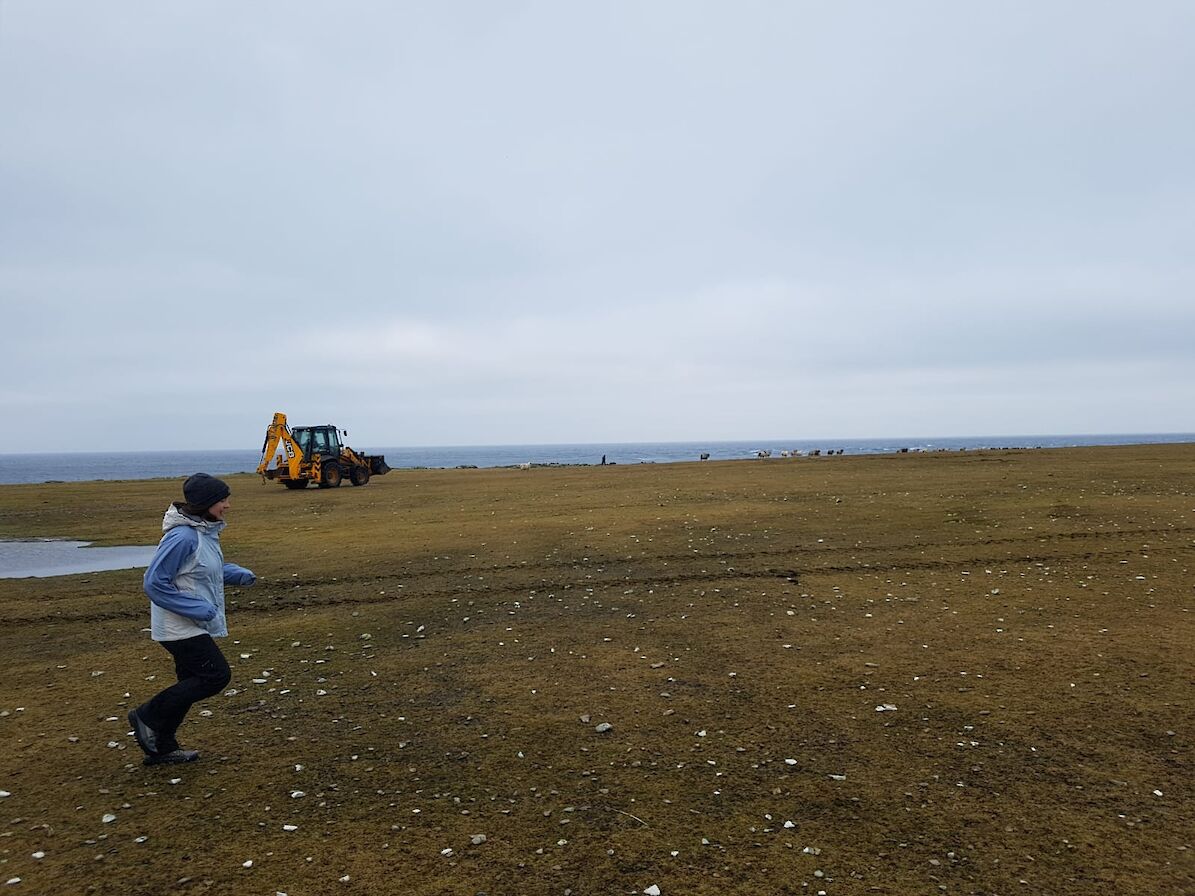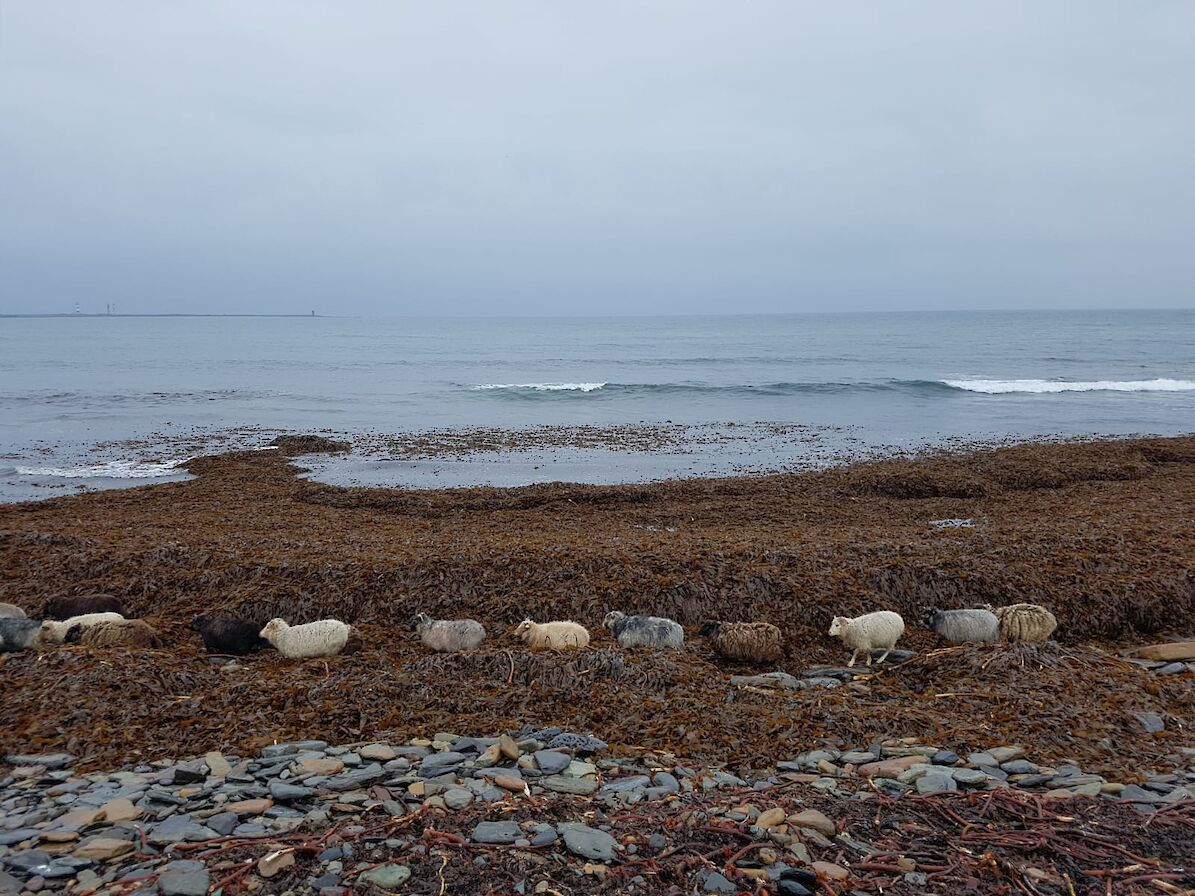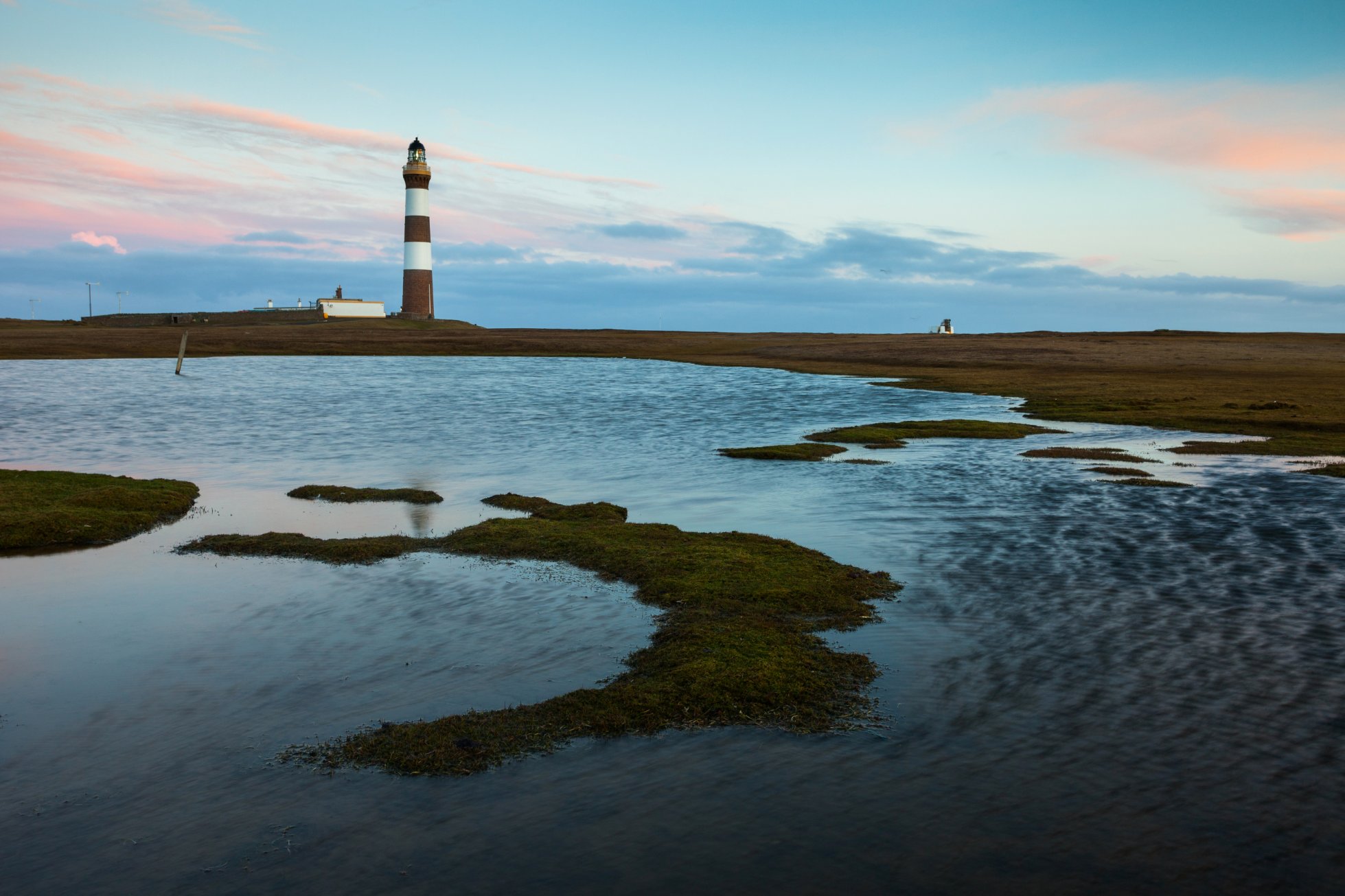Taylor St. John recently swapped Glasgow for Orkney with her partner. Originally from the United States, Taylor will be keeping us up to date with her island experiences. This month she starts her sight-seeing journey across Orkney's different communities.
The first image in my head after our eight-seater aircraft took off from Kirkwall Airport at 7:35am on a Friday morning in April was of the old War Room maps of Orkney hanging in my hallway in Stromness. Having so far ventured only to Hoy and South Ronaldsay, how often had I looked at the outlines on the map of each blot of land to the north and wondered what was there.
As our tiny plane propelled itself northward well under the cloud bank, those lines on paper of Eday and Stronsay came to life. The length of Sanday’s white beaches popped into three dimensions. And just beyond, a small fish hook of green broke the surface of the North Sea, white wash lapping from all sides at the rocky shore.
My partner, Richy, and I were on a mission to explore Orkney’s north isles by way of its famed inter-island service - a trip that includes the world’s shortest commercial flight. The three-day island-hop started as an opportunity to explore the outskirts of home territory.
By the end, even with our island visible on the horizon, it felt like we were returning from a far-off land, filled with stories of unusual adventure.
The islander aircraft touched down at 7:52am on the landing strip of the northernmost island in Orkney, North Ronaldsay. On a clear day, you can see Fair Isle from the island’s lighthouse. We set out along the beach in the opposite direction heading toward the Bird Observatory, where we had booked a room for the night.
Chiffchaffs, skylarks, lapwings, oyster catchers and a cluster of inquisitive seals led us to the Observatory, and Pot the dog greeted us as at the front of the building. It was April and tourist season hadn’t yet begun. We ate a family-style dinner with operators Alison and her husband, the former island doctor, Simon the warden, and a few volunteers. We chatted casually about the history of the island and its 70 inhabitants, the local birdlife, and Richy’s involvement in renewable energy back in Stromness.
Then, somewhere between the chicken pie and pudding we received a curious invitation. With the nodding of heads and more than a few questions unasked, we were recruited to join the entire island in rounding-up the iconic population of resident seaweed-eating sheep.
At 11am the next day we arrived at the agreed-upon fork in the road to find the only other tourists on the island—a Canadian couple.
Could this be some running island joke?
It turns out the locals were waiting on the morning flight to arrive, fully loaded with friends and children who’d all returned to help herd. Soon a group of us were bouncing along in a trailer bed carted behind a large tractor heading toward a long, low stone wall and the beach beyond.
North Ronaldsay’s residents have exercised a communal shepherding system of the island’s rare and ancient breed of sheep since the mid-1800’s. Several times a year, the animals, kept to the beaches by a drystone dyke encircling the whole island, are brought into pens for sorting. This can be for shearing, to pick animals for slaughter, or, in our case, to bring the pregnant females off the beach to lamb.
When I hopped off the trailer, multi-coloured and dreadlocked seaweed-eating sheep pranced nervously in outlying clumps. Suddenly two front-end loaders raced with buckets held high across a grassy plateau, funnelling the sheep in the direction of the beach below. The driver directed those on foot to run this way or that, cutting off the sprinting line of sheep at an impasse. Back and forth and back we ran, trial and error until the herd had all made it onto a thin strip of rock and sand against a section of stone dyke with built-in enclosures called punds.
The essential element to a successful ‘punding’ is high tide. The water keeps the sheep higher up the beach and means less ground for your runners to cover. Metal fencing materialized from one of the farmers, and we lined up the sections from the opening in the wall down to the waves.
As I struggled to get a firm stance on the slippery rocks, I could see two men across the beach making giant clown-like arm movements to shift the nimble herd closer to the entrance. After more trial and error - the theme of this ramshackle round-up - the herds were coerced into their temporary home and, somehow, so were we.
Next began the process for each farmer to identify their own sheep. A narrow corridor connected one enclosure to another, and I became a human fence post in the middle. As more and more sheep were brought through for sorting, our muddy little pen got less and less spacious. The animals pushed and shoved in all directions, many rightfully eyeing me as the weak link and nudging over to source an escape.
One male who had been hand-reared pushed affectionately into Richy. He was chesnut brown with a tan curly mop of wool on top of his head. He looked up with one grey and one blue eye hoping for a scratch.
Then, as haphazardly as the morning events began, so did they end. We were thanked and relieved of duty, farmers drove off with their sorted animals, the rest of the sheep were prepped for release back to the beach. The sky turned cold and grey as we hoisted a local’s vehicle out of a mud pit where it had been abandoned earlier. He gave Richy and I a lift so we could use our last few hours in North Ronaldsay to resume normal tourist activities—visiting the lighthouse and the island’s small museum.
Back at the air strip, we sprawled on long benches in the holding room in mud-splattered clothes, wondering at how much had happened since we’d left Kirkwall the previous morning. The islander plane scuttled to a halt on the runway at 16:17. Three passengers piled off, three of us took their places, and one woman remained onboard as if waiting for the next stop on her bus commute.
What, I wondered, might Papa Westray offer that could top my newly earned title of sheep wrangler?
Find out more about North Ronaldsay via the links below
 Originally from the States, Taylor is a freelance writer who’s spent the last several year collecting odd jobs around the world. She’s been a lifty and fish-monger in New Zealand, a bed-maker and vineyard worker in Australia, and, most recently, a destination specialist for a tour company in Glasgow. In 2018 she joined her partner in Orkney for his job in the renewable energy industry. Taylor’s favourite thing about daily life in Orkney is savouring the moments of absolute quiet - and sea views - that are no longer reserved for holiday. Also, trying to befriend all the farm animals. You can read more of her stories on her personal blog, The Out Roads.
Originally from the States, Taylor is a freelance writer who’s spent the last several year collecting odd jobs around the world. She’s been a lifty and fish-monger in New Zealand, a bed-maker and vineyard worker in Australia, and, most recently, a destination specialist for a tour company in Glasgow. In 2018 she joined her partner in Orkney for his job in the renewable energy industry. Taylor’s favourite thing about daily life in Orkney is savouring the moments of absolute quiet - and sea views - that are no longer reserved for holiday. Also, trying to befriend all the farm animals. You can read more of her stories on her personal blog, The Out Roads.
The Digital Orkney project has been part financed by the Scottish Government and the European Community Orkney LEADER 2014-2020 Programme.
